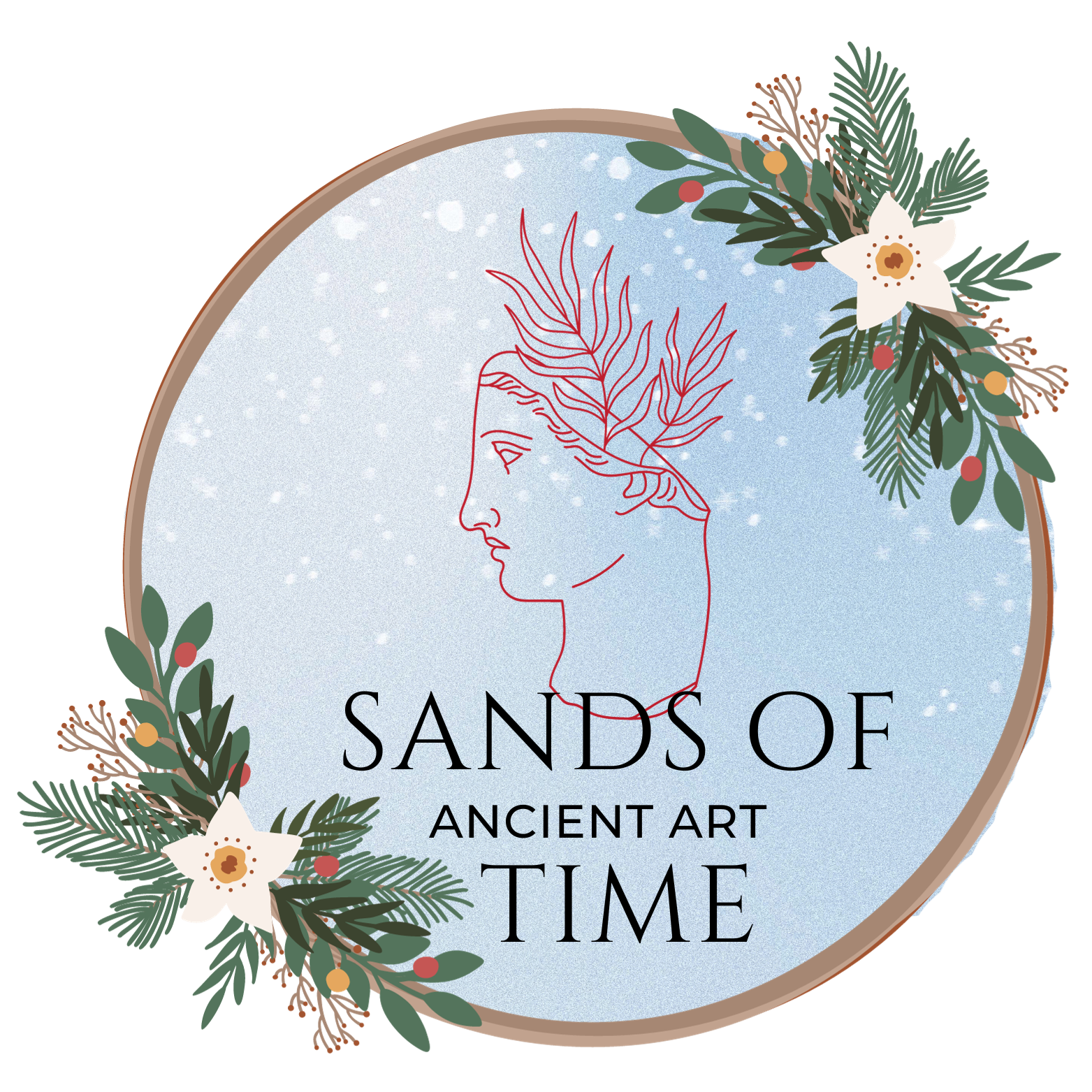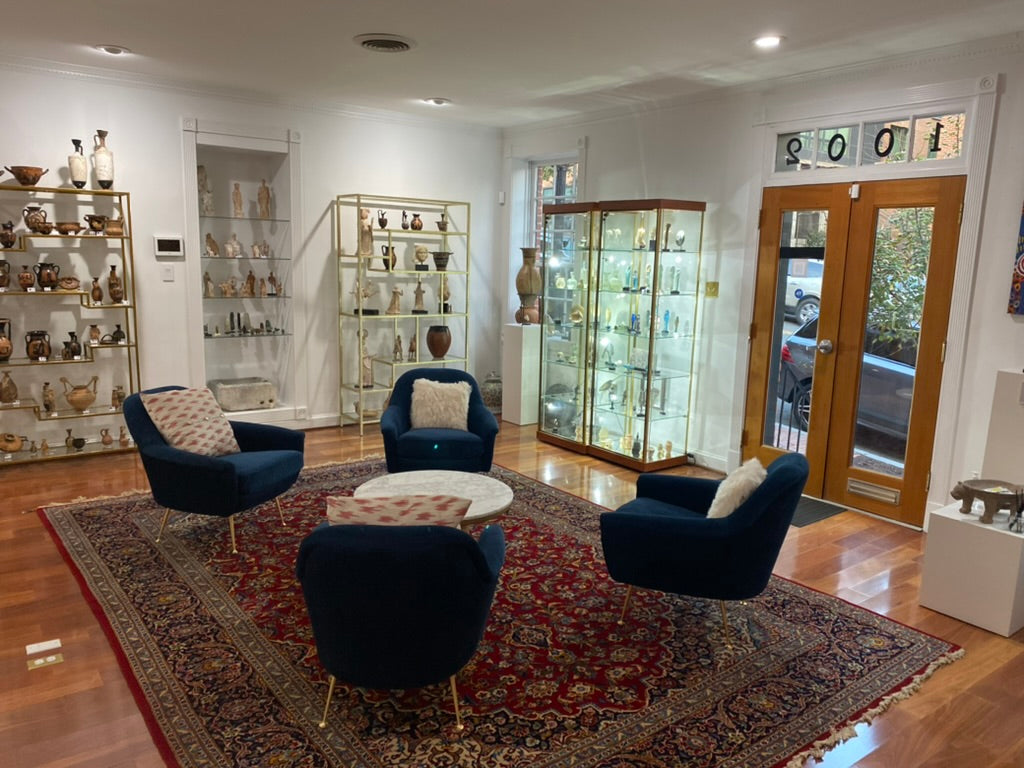
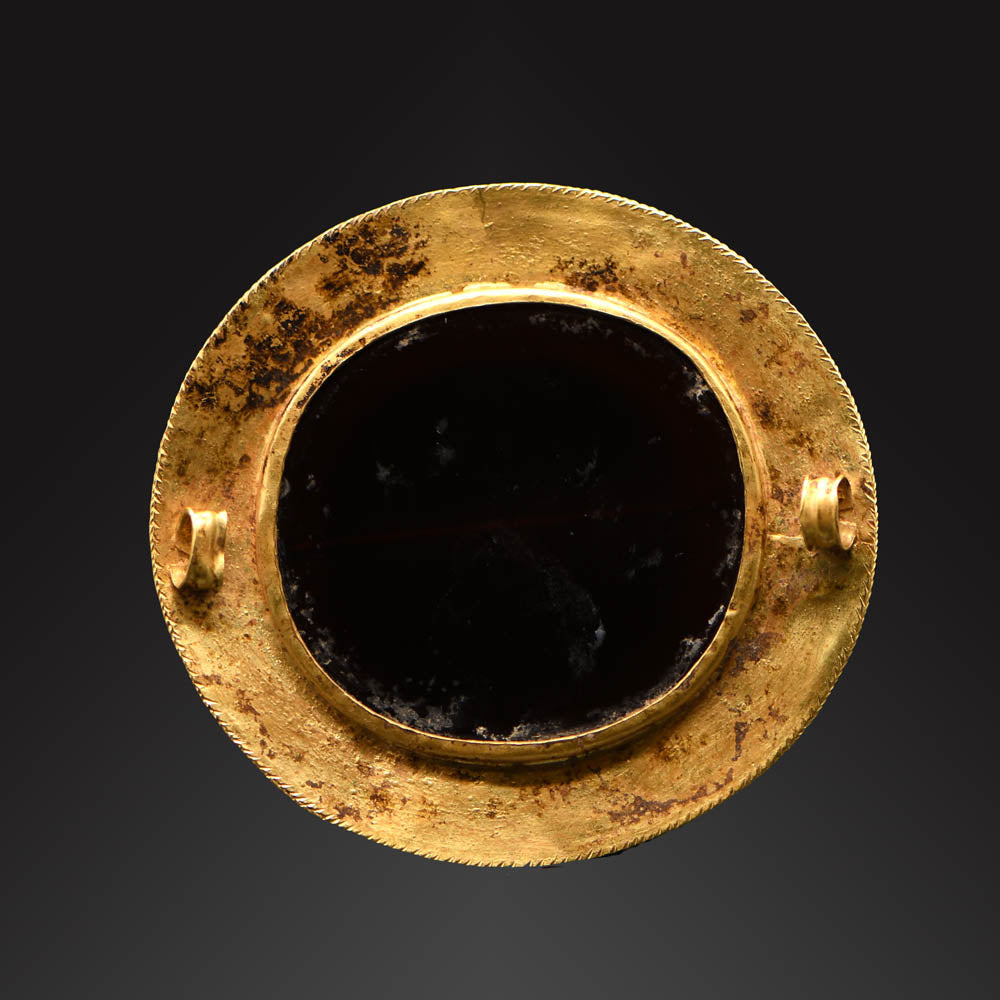
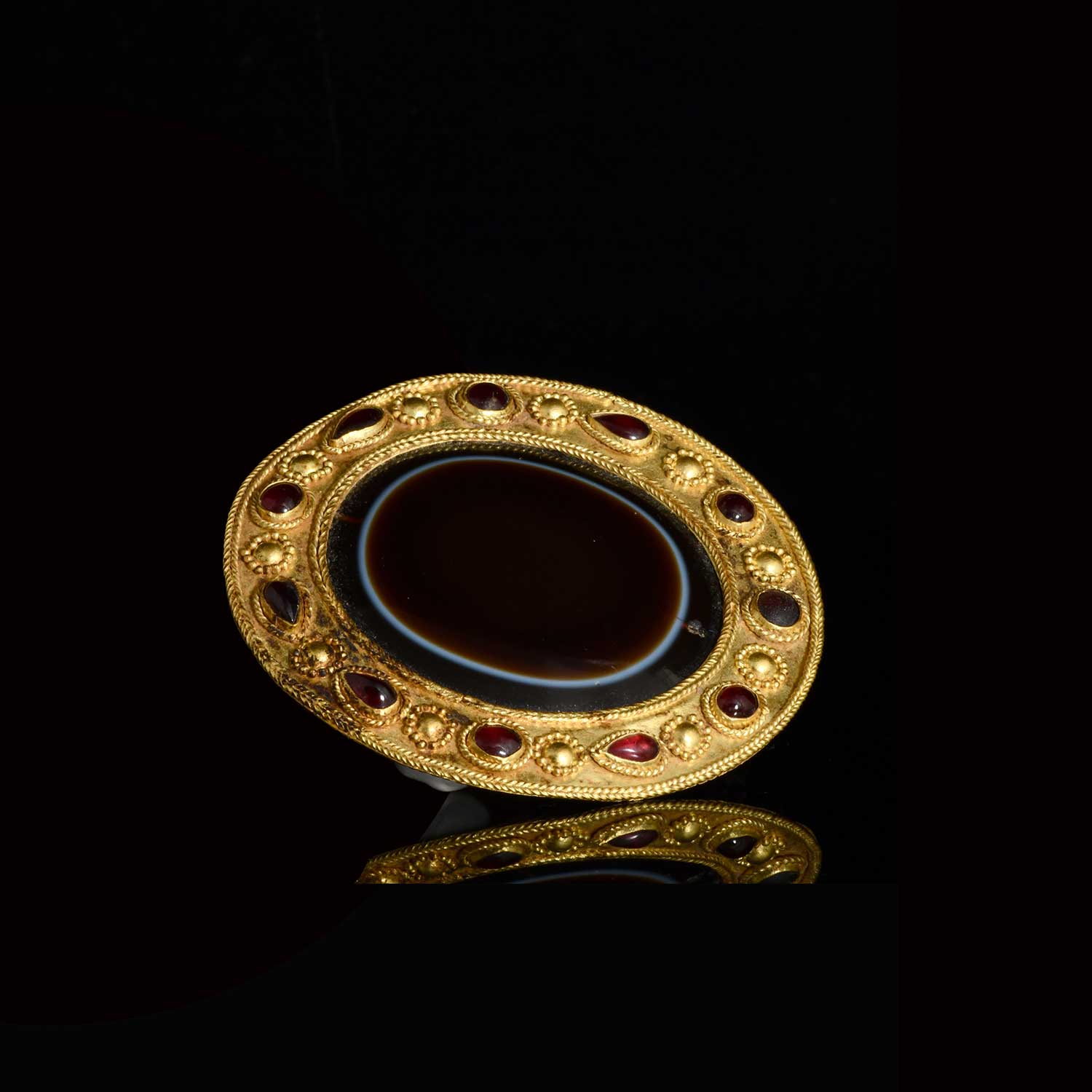
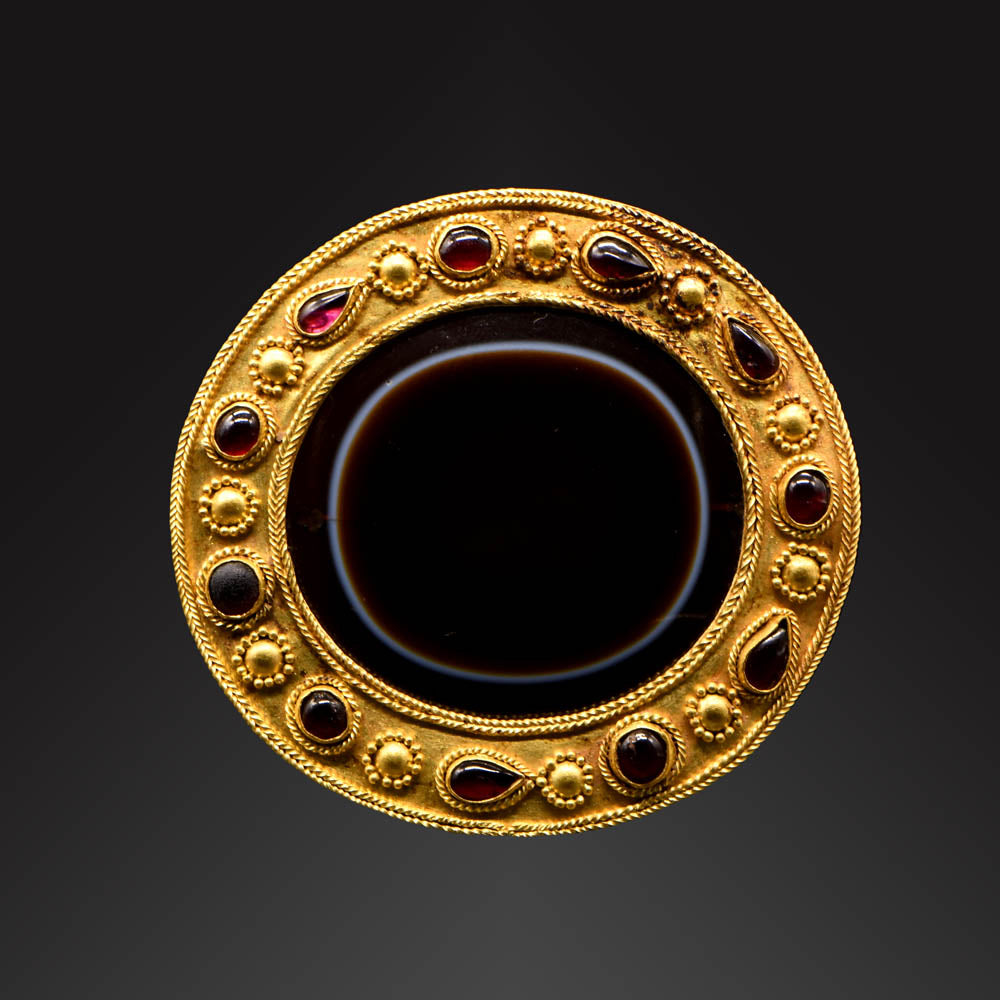
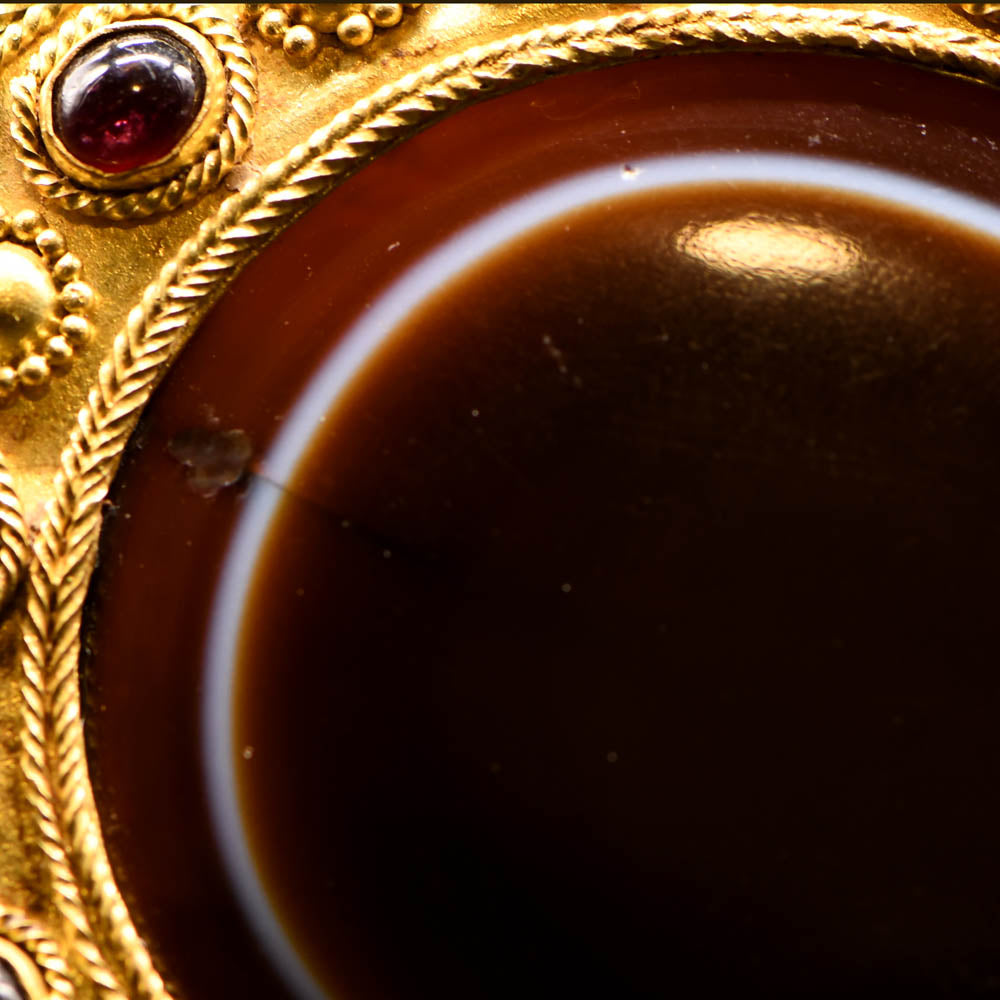
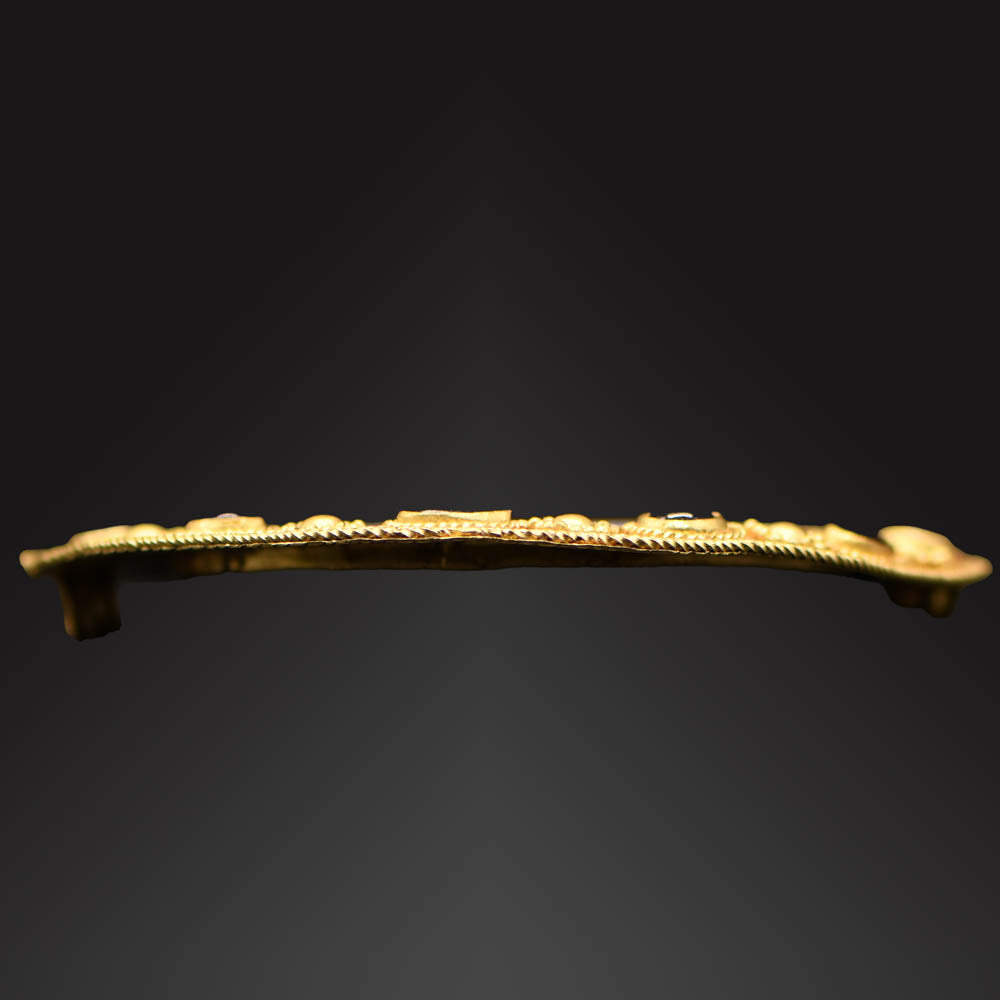
An Important Persian Eye Agate Pectoral, Parthian Period, ca. 1st century BCE - 1st century CE
PRICE ON REQUEST
This object qualifies for free and fast worldwide shipping.
The form of the pectoral and the method of inlaying are characteristic of Parthian jewelry, with such objects usually dating between the 1st and 3rd centuries. For a less elaborate example set as part of a necklace, see British Museum, object #W_1965-0215-1, https://www.britishmuseum.org/collection/object/W_1965-0215-1.
Condition: The pectoral is intact and in excellent condition overall. One of the garnet inlays replaced with glass in antiquity, and two small chips to the central agate professionally restored. A large, unique and truly stunning example.
Dimensions: Length: 2 3/4 inches (7.2 cm), Width: 2 5/8 inches (6.6 cm)
Provenance: Private Australian collection acquired from the London trade in the early 1960s, thence by descent, thereafter private Virginia collection.
We ship Tuesday to Friday with FedEx and usually same day if your order is received before 2pm. Within the continental USA, packing, shipping and insurance is free. Depending on size and destination, delivery times range from one to five business days.
For overseas shipments we charge a small flat rate which includes packing, preparation of all customs paperwork, insurance and carrier fees in compliance with all USA and International customs requirements. Overseas shipments are sent using either USPS Priority Mail or FedEx but contact us if you have a shipping preference. International customers are responsible for all duties and taxes.
Sands of Time provides a lifetime, unconditional guarantee of authenticity and provenance. Every object you purchase from us is accompanied by a Certificate of Authenticity, stating culture, provenance, and age.
Furthermore, we conduct due diligence to ensure the item, to the best of our knowledge, has not been illegally obtained from an excavation, architectural monument, public institution, or private property. Wherever possible, reference is made to existing collections or publications.Wherever possible, reference is made to existing collections or publications.
Choose options
